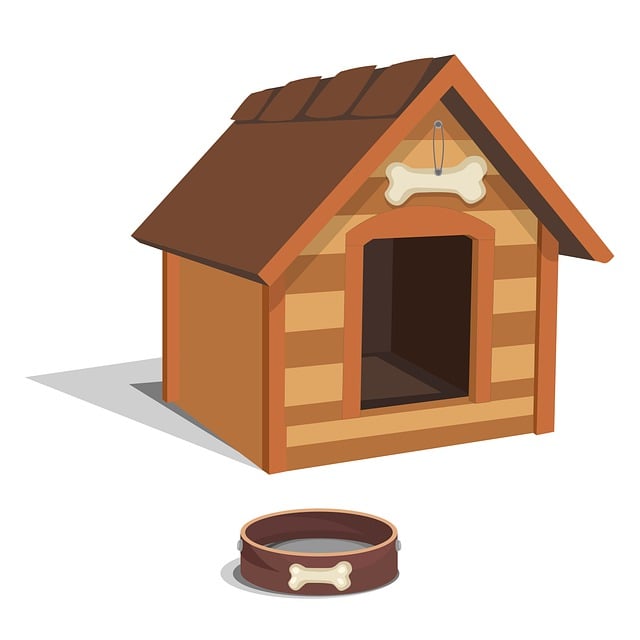Energy-efficient heating is a priority in modern homes, focusing on advanced technologies like heat pumps, smart thermostats, and enhanced insulation to minimize heat loss. This trend extends to heated dog houses, eco-friendly alternatives to traditional methods using fossil fuels. These houses, designed with insulation, temperature control, and sustainable energy sources like solar and geothermal power, offer significant cost savings and environmental benefits. Smart thermostats learn routines, optimizing temperatures while reducing energy waste; renewable energy sources provide consistent warmth without damaging the environment. This shift towards efficiency promises substantial impacts on both pet care and global conservation efforts.
In the pursuit of sustainable living, energy-efficient heating is more than just a trend—it’s a necessity. This comprehensive guide explores innovative solutions to keep your space warm while reducing environmental impact. From understanding the basics to unique approaches like the Heated Dog House, we delve into effective alternatives to traditional systems. Discover the power of insulation, smart thermostats, renewable energy sources, and cost-saving benefits. Additionally, we gaze into the future of heating technology, highlighting trends set to revolutionize our homes and planet.
Understanding Energy-Efficient Heating: The Basics

Energy-efficient heating is a crucial aspect of modern home comfort, especially for those who want to keep their spaces warm while reducing energy consumption and costs. The basic principle behind it involves using advanced technologies and smart design choices to minimize heat loss and maximize energy transfer. Unlike traditional systems that might rely heavily on fossil fuels, energy-efficient heating methods offer eco-friendly alternatives.
One notable example is the heated dog house concept, which, despite its playful name, illustrates a key idea: utilizing modern heating elements in well-insulated structures to maintain temperature without excessive energy use. These systems often incorporate smart thermostats, heat pumps, and improved insulation to ensure optimal comfort while reducing environmental impact. By embracing these innovations, homeowners can enjoy cozy interiors year-round, contributing to a greener planet.
Heated Dog House: A Unique Approach to Energy Conservation

In the pursuit of energy-efficient heating solutions, an innovative approach is gaining traction among pet owners—the heated dog house. This unique concept is not just a luxurious amenity for our furry friends; it’s a strategic move to reduce overall energy consumption. By providing warmth for dogs in an efficient manner, these heated houses offer a compelling alternative to traditional heating methods. They are designed with insulation and temperature control mechanisms, ensuring pets stay cozy while minimizing energy waste.
The heated dog house trend reflects a growing awareness of sustainable living. It encourages pet owners to take a more thoughtful approach to resource utilization, mirroring the principles of energy conservation in human homes. As the demand for eco-friendly solutions rises, such innovations are poised to make a significant impact on both the pet care industry and global efforts to reduce energy usage.
Traditional Heating Systems vs. Energy-Efficient Alternatives

Traditional heating systems, while effective, often come at a high energy cost. These systems, such as fossil fuel-based radiators or old electric heaters, can be inefficient and contribute to significant carbon footprints. In contrast, energy-efficient alternatives like heat pumps, smart thermostats, and improved insulation offer a more sustainable solution. By utilizing renewable energy sources and advanced technology, these modern options can provide warmth while reducing energy consumption and associated costs, making them an ideal choice for even the most meticulous pet owners looking to maintain a heated dog house.
The Role of Insulation in Energy-Efficient Heating

In the quest for energy-efficient heating, insulation plays a pivotal role in creating a comfortable and warm environment while reducing energy consumption. Proper insulation acts as a barrier, minimizing heat loss from your home or heated dog house during colder months. By trapping air pockets and preventing thermal conductivity, insulated walls, roofs, and floors significantly decrease the workload on heating systems. This means lower energy bills and a reduced carbon footprint.
Imagine a well-insulated space—the heat stays put, circulating efficiently. This is particularly beneficial for maintaining consistent temperatures in areas like dog houses, where effective insulation can ensure your furry friend enjoys a cozy haven without unnecessary energy waste. It’s a simple yet powerful step towards sustainability and comfort.
Smart Thermostats: Optimizing Your Home's Temperature

Smart thermostats are a game-changer when it comes to energy-efficient heating, turning your home into a cozy, yet eco-friendly haven. These advanced devices learn and adapt to your daily routines, optimizing temperature settings to reduce energy consumption. For instance, they can lower the heat during times of inactivity, ensuring your home is not a bustling heated dog house unnecessarily.
With their intuitive interfaces, you can easily program custom schedules and control temperature remotely via smartphone apps. This level of precision allows for significant savings on your energy bills while maintaining a comfortable living environment.
Renewable Energy Sources for Heating Your Space

Renewable energy sources are transforming the way we heat our spaces, offering eco-friendly alternatives to traditional heating methods. For pet owners looking to create a comfortable and energy-efficient heated dog house, solar power is an excellent option. Solar panels can be installed on rooftops or in open areas to capture sunlight and convert it into electricity, which can then be used to power heating elements within the dog house. This not only reduces reliance on fossil fuels but also provides a consistent and sustainable heat source.
Geothermal energy is another renewable resource that can efficiently heat and cool your pet’s sanctuary. By utilizing the Earth’s constant temperature below ground level, geothermal heating systems circulate heated or cooled air throughout the dog house, ensuring a comfortable environment year-round. This method is particularly effective in regions with extreme climates, making it a versatile choice for both hot and cold seasons.
Cost Savings and Environmental Benefits of Energy-Efficient Heating

Energy-efficient heating systems offer more than just comfort; they provide significant cost savings and environmental benefits, making them an excellent choice for anyone seeking to optimize their living spaces, even in the most extreme climates. By adopting technology that reduces energy consumption, such as smart thermostats, heat pumps, or solar-assisted heating, homeowners can expect to see a notable decrease in their utility bills. These systems are designed to maintain comfortable temperatures while minimizing energy wastage, ensuring that every unit of energy used contributes directly to warmth rather than wasted heat loss.
Beyond financial savings, energy-efficient heating plays a crucial role in reducing the carbon footprint. Traditional heating methods often rely heavily on fossil fuels, contributing to greenhouse gas emissions and climate change. Efficient systems, however, utilize renewable sources like electricity or solar power, offering a greener alternative. This shift not only helps combat environmental degradation but also fosters a more sustainable future, especially when combined with eco-conscious practices in other areas of the home, such as a heated dog house designed for energy efficiency.
Future Trends in Energy-Efficient Heating Technology

The future of energy-efficient heating looks promising, with innovative technologies set to transform how we keep our spaces warm. One exciting trend is the development of smart, adaptive heating systems that learn and respond to environmental cues. These systems can adjust temperature based on occupancy, time of day, and even weather conditions, ensuring optimal comfort while minimizing energy waste—even in the coldest of climates, making heated dog houses a reality for pet owners.
Another emerging trend is the integration of renewable energy sources like solar and geothermal into heating systems. As these technologies become more accessible and efficient, they offer sustainable alternatives to traditional fuel-based systems. This shift towards green heating solutions not only reduces carbon footprints but also contributes to a more resilient and environmentally friendly future, ensuring a warmer world in every sense—from cozy homes to comfortable public spaces.
